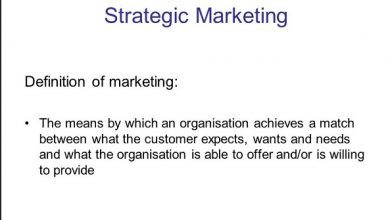Upskilling and reskilling meaning its application in company and role of HR
Upskilling and reskilling
In the job market, you’ve probably come across the word skill . The term, which means “skill”, is widely used in the corporate world and ended up generating other derivative expressions. Among them are upskilling and reskilling . We will elaborate you here that the Upskilling and reskilling meaning.
But do you know what these concepts mean and how they can be applied in your company? In this post, we take all your doubts about the subject and show how it is possible to implement this strategy in the organization. Check out!
What is upskilling?
The job market is always in constant change, which is why, many times, what we learn during graduation ends up being outdated. Therefore, it is necessary for the professional to continue studying and seeking updates to reach higher levels , such as full and senior levels or leadership positions.
Thus, when professionals seek to improve their knowledge in the areas in which they already work, to increase their possibilities and add more value to the corporation, we call it upskilling.
This concept can be translated as “ improvement ” and is important both for the professional to be able to keep up with technological advances and for the development of soft skills.
What is reskilling?
Reskilling can be translated as “ requalification ”, that is, a new process of seeking knowledge so that the professional can acquire new skills and be able to occupy different positions within the company in which he/she is already inserted.
This type of strategy is an excellent option for the organization to be able to take advantage of qualified human capital, just directing it to new functions. Therefore, it is a way for the company to value talent and contribute to their qualification in relation to activities that are not related to their current role.
As an example, imagine that Ana works as an administrative secretary in a large corporation, but is a strong enthusiast of the financial sector. Over time, and through observations and assessments , the HR manager realizes that Ana has the potential to work in finance, but she lacks some technical knowledge.
In this case, Ana will need to bet on reskilling to learn new skills , change areas and occupy a new position, even within the same corporation. This type of requalification is important because:
- enables adaptation to work changes;
- reduces costs and enables the retention of talent ;
- promotes employee engagement and reduces turnover;
- improves company performance;
- enables the professional growth of the team.
How to apply upskilling and reskilling in your company?
Filling the company’s skill gaps requires, first of all, a lot of planning. Therefore, it is important for the HR sector to work together with managers and directors to identify internal development demands and opportunities.
Here, the ideal is to map the skills necessary for the smooth running of the organization and, thus, be able to see more clearly all the skills that need to be developed.
In addition, it is necessary to define which talents to start with. To do so, seek to identify which professionals show more enthusiasm in improving or re-qualifying and those who have the right characteristics to secure higher positions or change areas.
Finally, it is necessary to define the strategies and methods that will be used for the development of employees. Below, we list some good options.
1-traditional learning methods
Formal learning methods, such as postgraduate courses, MBAs or even technical courses can be a good option, both to direct the professional towards upskilling and towards reskilling.
In addition, it is possible to invest in computer training, public speaking, languages, or even in specific tools to help employees improve their knowledge. An important tip for companies is to look for partnerships with colleges and universities to ensure better conditions for team development.
2-In-company training
Especially in the case of upskilling, a traditional course at a school or university is not always necessary. Often, training within the company can be enough to meet the improvement needs.
For this, it is possible to count on leaders and managers or even hire specialists to deliver the training. In the case of specific software, you can request training from the tool developers themselves or professionals who are already familiar with the technology.
In addition, you can create development programs focused on soft skills , improving important skills such as teamwork, creativity and communication.
3-mentoring programs
Another interesting strategy for applying upskilling and reskilling in the company is the creation of mentoring programs, in which the employees themselves add value and skills to the team . This type of action is very efficient in developing people and forming leaders.
Thus, it is necessary that young talents have access to the company’s top professionals, so that they can learn and seek guidance from them, in addition to acquiring more familiarity with the organization’s culture.
In the case of reskilling, it is important that the employee has contact with a professional who already works in the area to which he/she will migrate. Thus, it is possible to seek references and learn not only technical issues, but also the company’s specific routine and processes.
What is the role of HR in this type of action?
You might be asking yourself: after all, what role does HR play in this type of training? Wouldn’t it be easier if the employee himself went after the proper training?
The truth is, HR is at the heart of this strategy . Since he acts as a bridge between the employee and the company and one of his main attributions is precisely the development of talent.
Thus, it is up to the department to develop strategic plans to ensure the best use and management of people. In addition, it is necessary that the sector closely monitor the needs and changes in the market, ensuring the training and development of new functions and the replacement of professionals in new positions.
As we have seen, reskilling and upskilling are two important concepts for HR, as they help to develop new skills in the team and fill gaps, ensuring that the organization can keep up with market growth.




